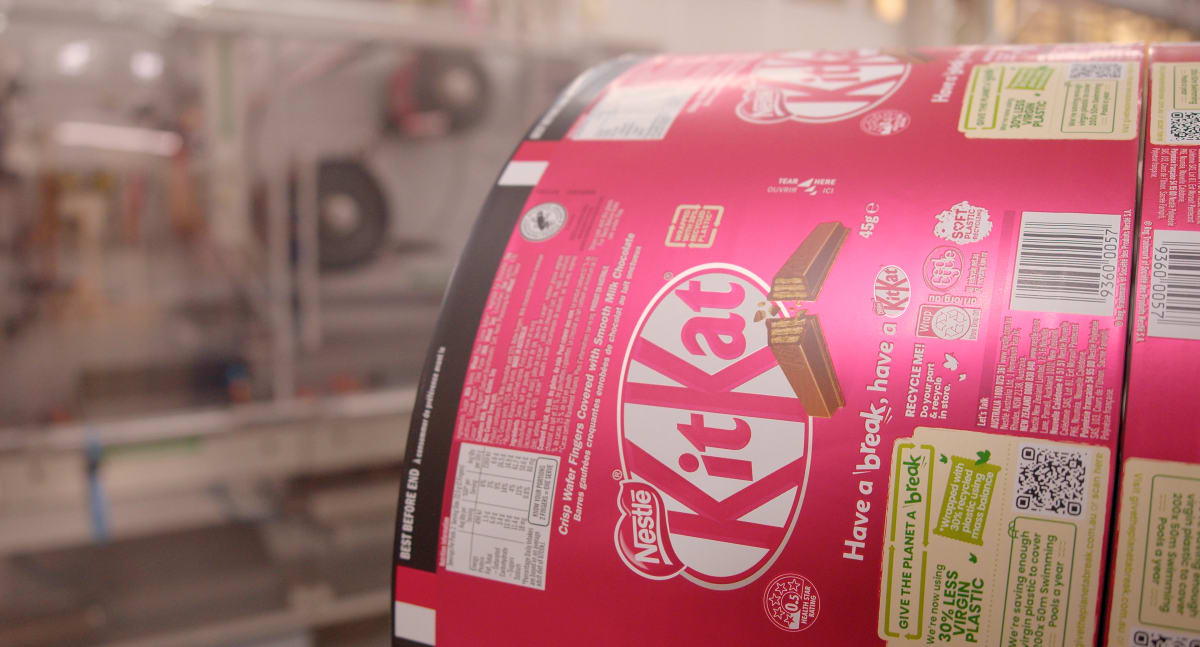
The dairy co-op's biggest customer Nestlé says greater efficiency is only a start – Fonterra's farmers must also cut absolute emissions.
Fonterra is announcing a new "credible" target to reduce supply chain emissions, after executives criss-crossed rural New Zealand with a roadshow to win the support from farmers that the Government has failed to achieve.
It's offering farmers help and incentives to produce their milk more efficiently, but Newsroom has learned it's stopped short of demanding absolute cuts to emissions.
That decision is welcomed by Federated Farmers. Richard McIntyre, the dairy industry group chair, says farmers have been frustrated by the expectation that they reduce emissions by reducing production; they would prefer to reduce emissions by operating more efficiently and using tools like feed conversion, improved cow health, reduced empty rates and increased milk yields.
"The Government's emissions reduction strategy is about reducing overall emissions on the farm, whereas Fonterra is focused on emissions efficiencies," he says. "So if a farm had the same emissions but produced twice as much milk, they would be twice as efficient in terms of kilos of milk solids."
READ MORE: * NZ’s farmers’ global customers demand more rigorous climate response * Can Fonterra finally focus on adding value to milk? Please
"The customer or the consumer, they don't care so much about the total emissions on the farm. What they care about will be about the amount of emissions in producing the chocolate bar that they're eating."
The reliance on intensity targets is greeted more cautiously by the dairy giant's biggest customer, though.
"Improving efficiency is certainly part of it," says Margaret Stuart, Nestle's director of corporate affairs and sustainability for Oceania. "But it's maths games, isn't it? Gross emissions reductions are absolutely important, because reaching zero is not about playing games with percentages.
"Zero is zero. It's an absolute, and our plan to reach net zero really does mean what it says – we do have to reduce gross emissions. Not just gross emissions per tonne of product. It's reducing emissions, regardless of business growth."
"This is to deliver against a target that is credible, meet the needs of our customers and consumers, while also maximising the production and efficiency of your businesses." – Miles Hurrell, Fonterra
Take that chocolate bar – one of Nestle's Kit Kats as an example. It's all very well to use "30 percent less virgin plastic" in the wrappers, as Nestlé boasts in New Zealand.
But the multinational says by far the largest contributor to its emissions is down on the farm. Roughly two-thirds of Nestlé's emissions come from its supply chain, and about half those from animal products, particularly dairy.
"We have to look at that chocolate bar in its entirety," Stuart says. "If I think about some of the things that that we're doing that might go into that chocolate bar, dairy is one component of it. But we've also got renewable electricity in the factory that's producing that chocolate. We're looking at how we improve the use of recycled content in packaging. We're looking at the transport. We're looking at where the cocoa comes from, including how do we address deforestation there, and how do we improve regenerative agriculture."
"For us as a buyer, we'll be looking at the ingredients that we buy. But we all need to look at overall missions. I don't think anybody's going to be able to achieve what they need to achieve by efficiencies alone."

Fonterra chief executive Miles Hurrell has issued farmers a warning. "It’s going to take ongoing action from all of us to keep ahead of our competition – which is coming not only from dairy producers but also potentially dairy alternatives."
He proposes to cut Fonterra's scope 3 supply chain emissions, under the international Greenhouse Gas Protocol, by improving the emissions intensity of every kilogram of milk solids produced. "This is to deliver against a target that is credible, meet the needs of our customers and consumers, while also maximising the production and efficiency of your businesses."
The co-op is also investing in research and development and partnering with others on potential breakthroughs, he says.
This includes AgriZeroNZ, the public private partnership that’s working to solve the methane challenge – Fonterra is contributing up to $50 million over the next four years. "This work will accelerate as we continue to look for practical solutions that also support efficiency and the overall resilience of your individual farming businesses," Hurrell says.
It come after Fonterra this week announced a new higher target to cut its internal scope 1 and 2 emissions by 50 percent by 2030. Its $700 million investment is accompanied by $90m from the Government's GIDI industry fund, to help decarbonise its six big manufacturing plants.
The scope 3 target is more important still. But Fonterra and its farmers are reluctant to target absolute biological emissions cuts on a per hectare basis (kg CO2-e/ha).
Instead, the new target is to reduce emissions relative to each kilogram of milksolids (kgMS) – a more controversial emissions intensity measure. It counts the emissions that are generated per unit of product, in this case milk. (kg CO2-e/kgMS).
At present, according to Fonterra example, the average farm's products emit 13.28 kg of CO2-equivalent, per kilo of milk solid. Those emissions factor in the impacts of land use, land use change and peat soils.
The target will be to reduce that.
Fonterra's roadshow briefing paper to farmers acknowledges both the intensity and absolute measures are important: "New Zealand Government have set absolute emission reduction targets, while the intended Fonterra Scope 3 target will be based on emissions intensity reduction."
"This will support on-farm efficiency improvements and cater for many of our customers who consider emissions intensity in their purchasing decisions."
It says that by improving how efficiently a farm can produce milk, farmers are able to maintain productivity while reducing emissions on both an absolute and intensity basis.
Fonterra on-farm emissions intensity (CO2-e/kgMS)

What the paper doesn't say is that the reliance on an emissions intensity target would also allow farmers to increase their absolute emissions, as long as they increased their milk production even faster.
Charlotte Rutherford, Fonterra's director of Sustainability, says scope 3 covers indirect emissions occurring because of the activities of an organisation, but generated from sources not owned or controlled by that organisation. In Fonterra’s case, the largest component of its scope 3 emissions are those arising from the on-farm emissions of supplying farms.
And for some of Fonterra's customers. the largest component of their scope 3 emissions are those coming from Fonterra. "It’s also about meeting the expectations of our customers, consumers and stakeholders who are increasingly wanting us to accelerate progress to reduce our emissions."
She argues New Zealand dairy leads the way in low-carbon agriculture, "but we can’t sit still" – so setting a scope 3 target is important.
"We’ve been talking to farmers about the importance of reducing our co-op’s on-farm emissions and how we can best support their ongoing efforts to do so," she explains. "This has included a discussion on why a target is needed, what that target would look like and how we can work together to achieve it."
She says banks, insurers and financiers are requesting details on the steps the co-op is taking to reduce its carbon footprint.
Five of New Zealand’s key agricultural banks recently signing up to the United Nations Net Zero Banking Alliance, requiring them to set targets, which means both the co-op and farmers' access to funding will likely be tied to meeting emissions targets.
And the dairy giant's high-value customers are setting emission reduction targets and are looking to Fonterra to do its bit. "Giving them confidence that we will help them achieve their targets will likely benefit our relationship with them and could be the point of difference between them choosing us over a competitor," Rutherford says.
It's following the lead of a number of its big corporate customers, in signing up to the Science Based Target initiative. There has been an 18-fold increase in sales gross margin linked to such customers, the briefing paper notes.
Milk power and food supplier Nestlé, a third of whose emissions come from dairy farming, is committed to a 20 percent reduction across all scopes by 2025, 50 percent by 2030, and also going net-zero by 2050.
Nestlé partners Fonterra in a demonstration net-zero farm in Taranaki, on a 290 hectare property surrounding Fonterra’s Whareroa production site. "We have over 100 projects in place in different places around the world looking at what farmers can do to reduce emissions, and how can we work with our suppliers to find a new course," Margaret Stuart says.
"We source dairy from a lot of countries, of which new New Zealand is undoubtedly an important one. But the implications of that is that dairy is produced differently in every country – so we're not trying to go out there and apply one size fits all type solutions."
Another big customer, food and confectionary maker Mars has committed to cutting its scope 1, 2 and 3 emissions by 27 percent by 2025 and going net-zero by 2050. Global cafe chain Starbucks is committed to a 50 percent reduction across all scopes by 2030, and global quick-service restaurant chain Yum to a 46 percent reduction by 2030.
Unilever, the other biggest Fonterra customer, is committed to going net-zero by the much earlier date of 2039 – but its hasn't made any commitments to cutting its Scope 3 supply chain emissions ahead of that, just its own internal emissions.
The deal to cut Fonterra's internal Scope 1 and 2 emissions, announced earlier this week, is important to New Zealand’s attempts to cut emissions – the co-op is the country's single worst climate polluter, reporting more than 13.3 million tonnes of greenhouse gas emissions to the Environmental Protection Authority.
That’s nearly as much as the Big Three fuel companies combined – and they're the next biggest emitters.
The benefits of the bespoke deal are not just to the environment but to trade, Prime Minister Chris Hipkins argues. “By partnering with Fonterra to reduce emissions we’re helping to maintain New Zealand dairy’s competitive edge, as international consumers and food manufacturers demand further climate commitments.”
Views are mixed about the dairy plant conversions, which involve some solar and other renewables – but are mostly about replacing coal with wood pellets made from forestry waste.
Renewable energy expert Professor Andrew Blakers from the Australian National University has described burning wood pellets as an expensive detour on the road to a clean energy future; others see them as a bridge on that road. While burning biomass still emits carbon dioxide, wood is renewable in a way that fossil fuels are not. It cycles carbon through the atmosphere, rather than adding new CO2 to the cycle from burning coal or gas.
Chief executive Miles Hurrell says Fonterra plans to get out of coal entirely by 2037 – which is not especially ambitious (though it’s more than the likes of Huntly power plant operator Genesis Energy will commit to).
The Fonterra subsidy seems more crude than the Government's partnership with NZ Steel, announced in May, in which the GIDI fund is contributing $140m to the cost of a new electric arc furnace at the steelmaker's Glenfield mill. That deal contained a 30MW, 10-year electricity supply agreement with Contact Energy, which should help finance the construction new of new wind and solar power.
In the case of the Fonterra funding, it’s not clear what the Government will contribute beyond cash, and how much of this work Fonterra would have done regardless. Boiler conversion projects like Te Awamutu and Hautapu are already complete or well underway, and Hurrell says they’ve been assessing biomass, electrification and heat pump technology at their South Island sites.
The Fonterra projects are forecast to have a fairly average abatement cost to government of around $43 per tonne; by contrast, the NZ Steel deal cost the GIDI fund just $16.20 per tonne.
But most of all, there remains the vexed issues of the dairy industry’s on-farm methane emissions – though methane doesn’t stay in the atmosphere as long as carbon dioxide, it does cause more rapid global warming. Cutting agricultural emissions is New Zealand’s best chance to contribute to a short, sharp reduction in greenhouse gases that will make the longer path an easier one.
Fonterra’s targeted Scope 1 and 2 emissions cuts for 2030 will bring it in line with some of the more ambitious big agricultural producers in the world, as it works towards its bigger goal of net-zero by 2050. It’s seeking accreditation to the Science-Based Target initiative, aligned to limiting global warming to 1.5C.
But its Scope 3 emissions target, which Hurrell confirms will be announced shortly, is more important still – because it means cutting on-farm emissions. That's helps New Zealand meet its climate budgets and also helps Fonterra sell its product. "Having an on-farm emissions target is an important part of keeping our co-op resilient for the future," Hurrell says. "This work will help future-proof Fonterra, supporting our ambition to be a longterm sustainable co-op for generations to come."
How can Fonterra help farmers?
In its roadshow briefing paper, Fonterra anticipates that new technology and innovations will enable further emissions reductions, as well as incentive payments.
► It pays more for milk from farmers who adopt new and emerging practices – on average those farms that achieve Te Tihi through The Co-operative Difference payment have a 7 percent lower carbon footprint. ► It has 18 different projects underway working to solve the biogenic methane challenge in partnership with others. Within these projects are more than 30 trials in progress – from feed supplements to manure management and more. ► One project that farmers may be familiar with is Kowbucha, which the co-op says has shown potential to reduce methane and may provide other benefits in early life intervention trials. ► Another trial, which it has recently expanded, is with a type of seaweed called Asparagopsis, a feed supplement that has shown potential for methane reduction in cows. ► In December 2022, Fonterra announced it would be invest up to $50m in a public private partnership with Government and industry to develop and commercialise practical tools and technologies for farmers. ► It's implementing a GHG farmer support pilot programme, providing one-on-one assistance identifying opportunities for emission reductions on-farm.







